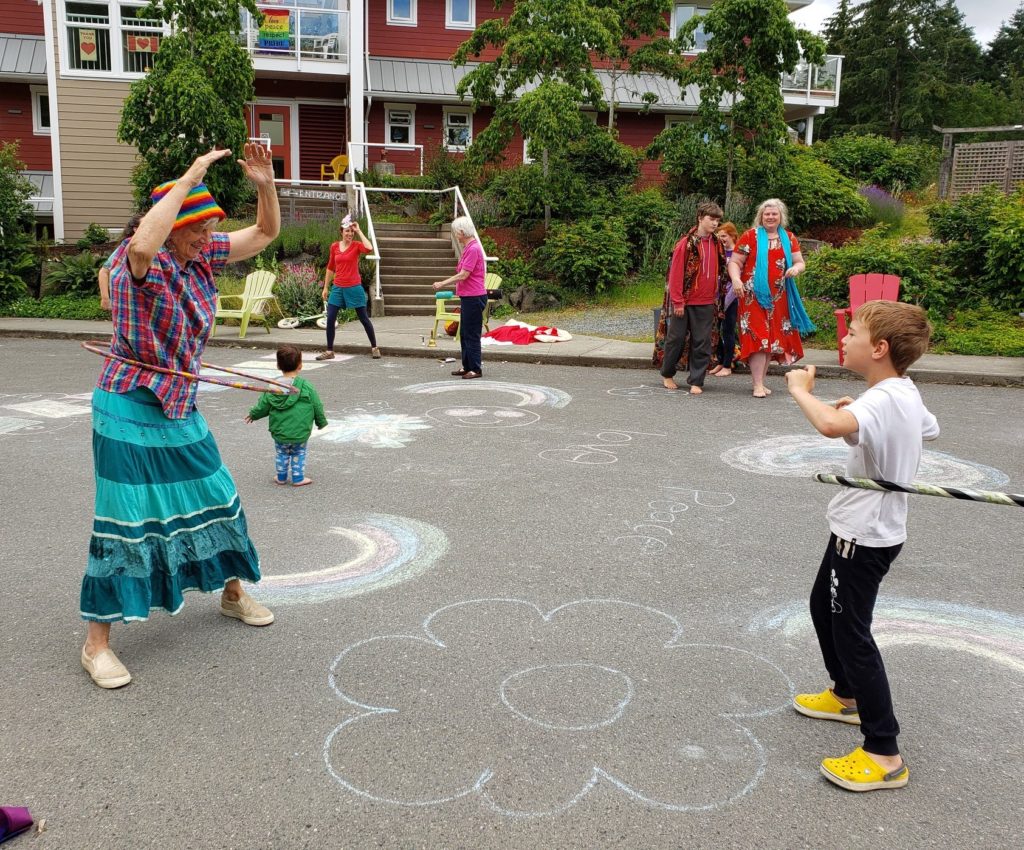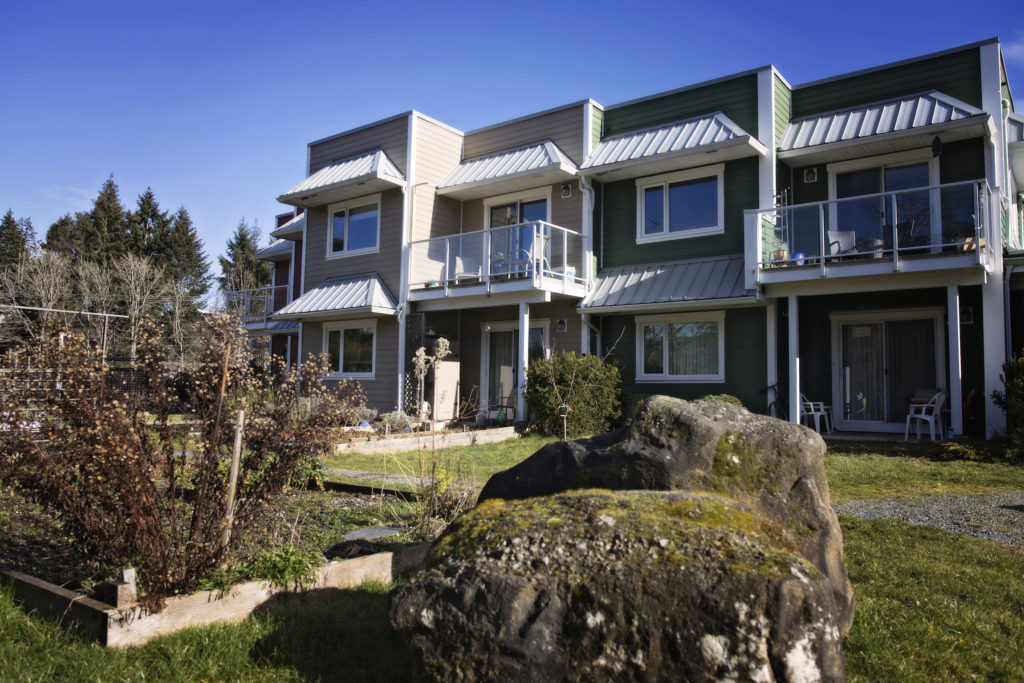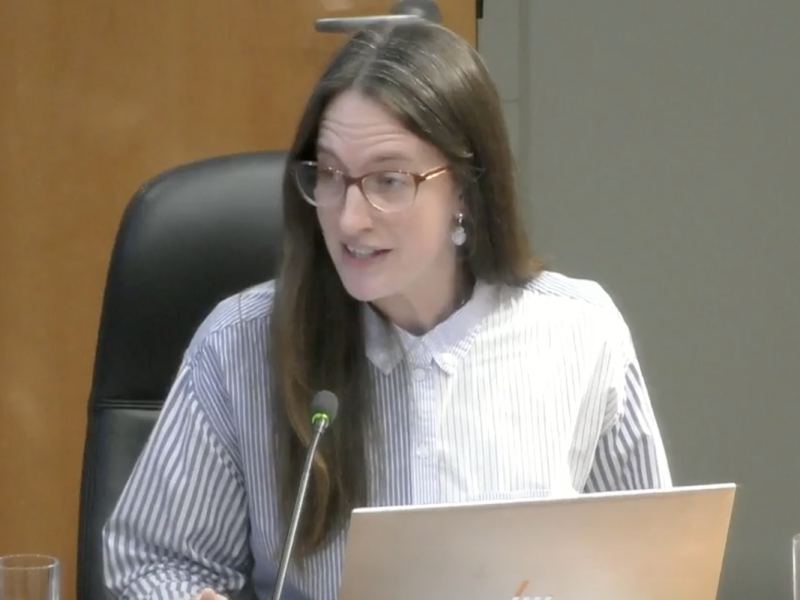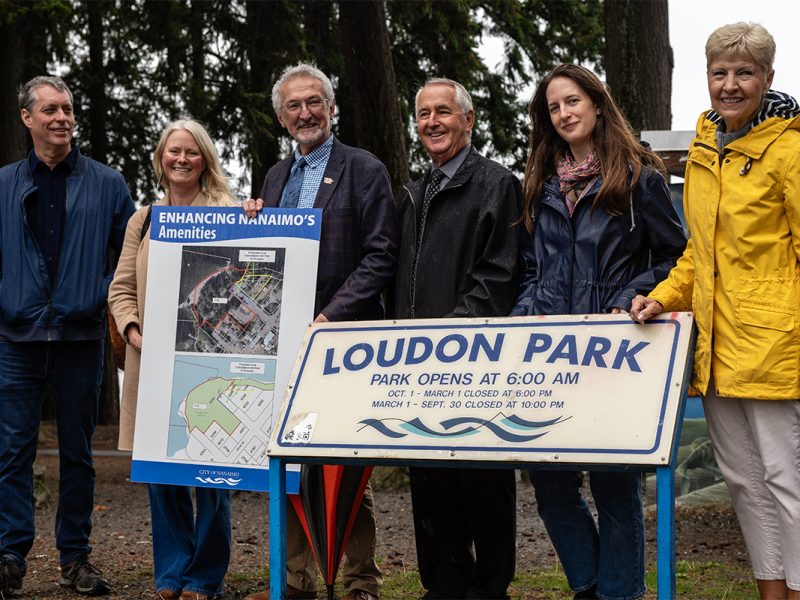
This story is from our solutions series, Making Rent. Sign up for our weekly newsletter for the latest updates on this reporting and more community highlights.
Do you know your neighbours’ names—first and last? What about their birthdays?
Although cities are becoming more dense and technology has made the ability to connect with each other instant, the emotional distance between some people continues to grow. But connection is hardwired in us, and there is a growing population seeking out creative ways to bring back community into their lives.
I spoke with residents of Nanaimo’s only cohousing complex, Pacific Gardens Cohousing Community, to learn about how they are doing just that.
Long-time resident Mia Jongkind can tell you all the names of her 54 neighbours—and most of their birthdays too.
“I think we all need community in our lives,” says Mia. “You are part of a tribe here. Living this way is not paradise, but it is close to paradise.”
Let’s take a look at how cohousing fosters a sense of community and how it all works.
What exactly is cohousing?
Cohousing is an intentional community of private dwellings while benefiting from shared spaces and resources.
Residents often come from a varied social, cultural and economic background, however unlike members of a conventional strata building, people who chose to live in cohousing share a deep desire to build community, live a more sustainable life and exchange resources and talents.
Although some cohousing buildings are targeted toward a specific group like the Harbourside senior’s community in Sooke, B.C., there is a growing trend of creating multigenerational spaces as shown by the three new multigenerational developments in the South Island area alone.

Pacific Gardens Cohousing Community is a multigenerational 25-unit strata building on just over four acres of land in South Nanaimo. Located on Seventh Street, the property is five minutes away from downtown, but you would never guess it by how quiet the community is.
The former farmland is nestled between city parkland and the Chase River, and the property itself continues to maintain a lot of greenspace and heritage fruit trees.
The building features a conversation lounge, common kitchen, music room, woodworking shop, community gardens and more. Residents typically own their self-sufficient units (think of the function and style of a modern apartment unit) and share the responsibility to maintain common spaces.
The community has 13 children living in the complex, and being family-friendly is the main reason Myriam Verzat chose to move in.
When Myriam and her young family moved from Quebec to make a new life in Nanaimo, they left behind their extended support system. “We didn’t know many people when we first moved here. Now, our neighbours have become like grandparents and extended family to our children,” she describes. “It has helped us so much having childcare when we need it. It is very much like family here.”

How did cohousing get started?
The concept of cohousing emerged in Denmark about 50 years ago with the intention of creating a more community-focused way of living. In North America, approximately 160 cohousing communities have been completed since 1991, though only three are completed on Vancouver Island, with three other developments under construction or forming.
Ravens Crossing Cohousing in Sidney, B.C. is a 35 multigenerational complex scheduled to have residents move in for the fall of 2021. In Sooke, West Wind Harbour is scheduled to soon offer 34 oceanfront views to residents of all ages and backgrounds. The Victoria Urban Village is in its beginning stages of planning for a 10 to 25 unit multigenerational complex.
How does cohousing work?
“Cohousing spaces are created from kitchen table conversations with a group of passionate individuals all wanting to make a difference,” says Susana Michaelis, one of the founding members of the Pacific Gardens community.
Those conversations eventually led to making concrete plans to purchase the four -acre property in the early 2000s.
Susana explains that after the farmland had been purchased, the group sought out investors and future residents to financially back the project. The build began during the perfect storm: housing prices declined, building prices rose significantly and some people dropped out of the project. Despite the additional costs and hiccups along the road, the construction was completed in 2009.
In the beginning, it was a struggle to get people to purchase the units. Now people are waiting to get in. “Since COVID-19 began, the interest in cohousing has grown exponentially,” says Susana.
Pacific Gardens is zoned as a strata complex and residents are free to sell their private units to whoever they like, though potential buyers are encouraged to meet fellow residents, ask questions and decide if cohousing is the best decision for them.

Are all cohousing spaces the same?
Although all cohousing developments share a mix of private residences and collective spaces, it is the neighbours who truly make each place unique.
“Everyone has a talent that they bring to our community,” describes Mia. “We have someone who teaches Tai Chi, a resident who leads group dances, and another neighbour does meditation sessions. Everyone contributes with their own unique abilities to our group.”
Celebrations and gatherings are an integral part of creating community in cohousing, and it is led freely by residents’ wants. “In normal times, we have a lot of community activities, birthday celebrations, movie nights, and the list goes on and on,” says Susana.

Who would benefit from cohousing?
Anyone seeking more connection in their life and wanting to make a difference would benefit from cohousing living.
“Cohousing is the most expensive self-improvement course you’ll ever take,” jokes Mia. But it may be exactly that. The initial capital required to build an intentional complex is quite high as there are no government subsidies currently available.
Plus, the added maintenance and heating costs of all the shared spaces means that living in a cohousing complex is usually more expensive than if someone was to live in an apartment or townhouse complex.
Being so closely tied to your neighbours creates an almost family-like atmosphere. And within family arises conflict every now and again.
“There is always an issue to learn to let go of,” describes Mia. “Like I have a plant standing in the conversation longue which I love, but two other people say they don’t want that plant here, but I want that plant here.” It’s conflicts like these that present opportunities for individuals to learn and grow their communication and interpersonal skills
How can I find out more on cohousing?
Pacific Gardens Cohousing Community has a public newsletter for community members curious about cohousing living. In addition, the Canadian Cohousing Network is a great resource for reading material about cohousing and current developments throughout the country. [end]
This story is part of our solutions series Making Rent. Sign up for our weekly newsletter for the latest updates on this reporting.



